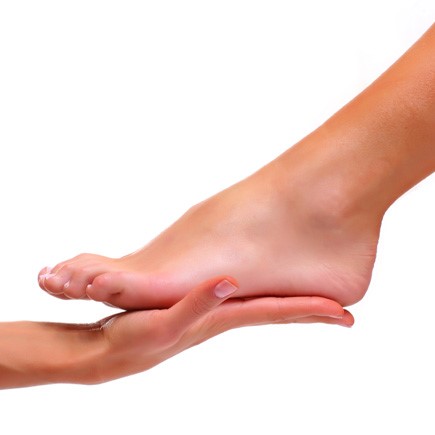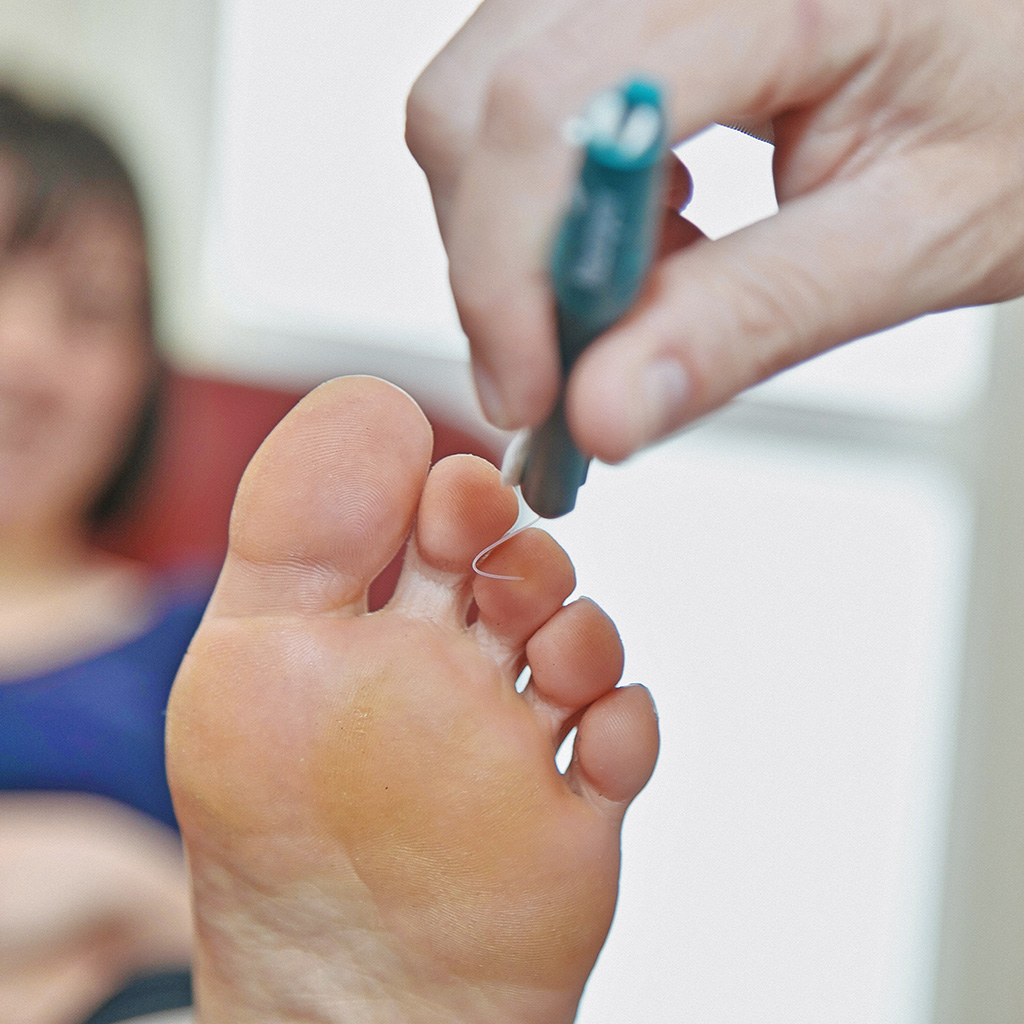
Diabetic Foot Assessment
Having diabetes, means you’re more prone to develop problems with your feet. And so, is important to take extra precautions and understand your current risk status to prevent complications. Our Podiatrists are trained to detect any foot problems resulting from Diabetes.
The diabetic foot assessment provides a comprehensive examination of your feet and is ideal for monitoring your foot risk status. By understanding why and how you should look after your diabetic feet, you can take action to prevent problems and keep your feet healthy.

Your diabetic foot assessment
Your Podiatrist will ask questions regarding your diabetic history and any previous foot related problems. A thorough examination is carried out to understand your foot risk status. Key components of the assessment are:
- Dermatological assessment: Visual inspection of your skin, nails and foot shape
- Vascular assessment
- Neurological assessment to checks for peripheral neuropathy
- Inspection of footwear, advice on appropriate footwear
- Diabetic foot report
- Management plan

FAQs
We check:
skin: colour, thickness, dryness, cracking, calluses/blistering: haemorrhage into callus, ulceration.
infection: check between toes for fungal infection.
Shape and structure of the foot any deformity, e.g., claw toes, prominent metatarsal heads, Charcot joints.
muscle wasting (between metatarsals).
During a vascular assessment, out podiatrists will evaluate the circulation in your feet and legs. some common methods used during this assessment.
Doppler Ultrasound: To assess arterial blood flow, a podiatrist may use a painless machine called a Doppler Ultrasound. This device uses sound waves to detect and measure the blood flow in the arteries of the feet. By listening to the arterial flow, the podiatrist can evaluate the circulation and identify any potential issues.
Vein Assessment: The health of the veins is also assessed during the vascular examination. The podiatrist will look for varicosed vessels, which are swollen and twisted veins, as well as signs of water retention and changes in skin tone. These observations can provide insights into the overall health of the veins and potential circulatory problems.
Blood Pressure Measurements: In some cases, the podiatrist may measure blood pressure at the wrist and ankle to assess for abnormalities. This is done by using a blood pressure cuff and Doppler device to determine the blood pressure in these areas. Comparing the blood pressure between the two sites can help identify any significant differences that may indicate circulatory issues.
Any two of the following tests will be conducted as part of your assessment:
10g Monofilament test: Our podiatrist will use a soft nylon fibre called a monofilament to gently brush over your foot and toes, evaluating your sensitivity to touch.
Tuning fork and visual perception tests (VPT): The podiatrist will apply a tuning fork or another device to your foot and toes, assessing your ability to perceive the vibrations produced.
Pinprick test: Our podiatrist will delicately prick the sole of your foot with a small pin to determine your sensation of pain.
Proprioception: The podiatrist will check your ability to perceive the position and movement of your toes. (Proprioception plays a crucial role in activities such as walking, running, and maintaining stability).
You can prevent or slow down changes to the nerves and blood vessels that supply your legs and feet, and prevent foot problems, by managing your diabetes well, controlling blood glucose levels and by staying active.
Keeping your feet healthy and pain free is vital to achieving an active life.
Walking becomes more difficult
Applying or wearing shoes becomes more difficult
Tingling sensation or pins and needles
Part or all of your foot becomes swollen
Breaks in the skin, opens sores/blisters or a discharge
Skin colour changes (redder, bluer, paler, blacker) over part or all the foot
Swelling in your feet and/or an unusual odour
Part or all your foot feels much hotter or colder than usual
Hard skin (callus)
Cramp in your calves
Shiny smooth skin and/or losing hair on your feet and legs
Get to know your feet! Take a good look at them every day. Because damage to the nerves and blood supply happens gradually, it is important to check regularly so you can spot any signs of change. Even if you think your feet are healthy.
Checking your feet daily doesn’t take long – just a few minutes can be enough to help prevent serious problems. 3 steps, 3 minutes
Wash your feet with warm water and soap, then pat dry (including in between toes)
Check your feet
Moisturise (avoid in between toes)
Tip: If you cannot see the soles of your feet, look at them through a mirror.
The main reasons foot problems can start – are because of an injury like a cut, or a blister caused by shoes rubbing or because of hard skin.
